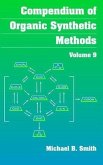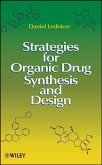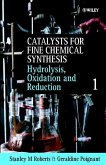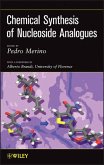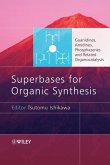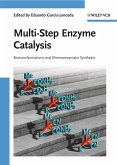Rolf Voges, J. Richard Heys, Thomas Moenius
Preparation of Compounds Labeled with Tritium and Carbon-14 (eBook, PDF)
170,99 €
170,99 €
inkl. MwSt.
Sofort per Download lieferbar

0 °P sammeln
170,99 €
Als Download kaufen

170,99 €
inkl. MwSt.
Sofort per Download lieferbar

0 °P sammeln
Jetzt verschenken
Alle Infos zum eBook verschenken
170,99 €
inkl. MwSt.
Sofort per Download lieferbar
Alle Infos zum eBook verschenken

0 °P sammeln
Rolf Voges, J. Richard Heys, Thomas Moenius
Preparation of Compounds Labeled with Tritium and Carbon-14 (eBook, PDF)
- Format: PDF
- Merkliste
- Auf die Merkliste
- Bewerten Bewerten
- Teilen
- Produkt teilen
- Produkterinnerung
- Produkterinnerung

Bitte loggen Sie sich zunächst in Ihr Kundenkonto ein oder registrieren Sie sich bei
bücher.de, um das eBook-Abo tolino select nutzen zu können.
Hier können Sie sich einloggen
Hier können Sie sich einloggen
Sie sind bereits eingeloggt. Klicken Sie auf 2. tolino select Abo, um fortzufahren.

Bitte loggen Sie sich zunächst in Ihr Kundenkonto ein oder registrieren Sie sich bei bücher.de, um das eBook-Abo tolino select nutzen zu können.
Compounds labeled with carbon-14 and tritium are indispensable tools for research in biomedical sciences, discovery and development of pharmaceuticals and agrochemicals. Preparation of Compounds Labeled with Tritium and Carbon-14 is a comprehensive, authoritative and up-to-date discussion of the strategies, synthetic approaches, reactions techniques, and resources for the preparation of compounds labeled with either of these isotopes. A large number of examples are presented for the use of isotopic sources and building blocks in the preparation of labeled target compounds, illustrating the…mehr
- Geräte: PC
- mit Kopierschutz
- eBook Hilfe
- Größe: 18.46MB
Andere Kunden interessierten sich auch für
![Compendium of Organic Synthetic Methods, Volume 9 (eBook, PDF) Compendium of Organic Synthetic Methods, Volume 9 (eBook, PDF)]() Michael B. SmithCompendium of Organic Synthetic Methods, Volume 9 (eBook, PDF)222,99 €
Michael B. SmithCompendium of Organic Synthetic Methods, Volume 9 (eBook, PDF)222,99 €![Strategies for Organic Drug Synthesis and Design (eBook, PDF) Strategies for Organic Drug Synthesis and Design (eBook, PDF)]() Daniel LednicerStrategies for Organic Drug Synthesis and Design (eBook, PDF)165,99 €
Daniel LednicerStrategies for Organic Drug Synthesis and Design (eBook, PDF)165,99 €![Hydrolysis, Oxidation and Reduction, Volume 1 (eBook, PDF) Hydrolysis, Oxidation and Reduction, Volume 1 (eBook, PDF)]() Hydrolysis, Oxidation and Reduction, Volume 1 (eBook, PDF)262,99 €
Hydrolysis, Oxidation and Reduction, Volume 1 (eBook, PDF)262,99 €![Chemical Synthesis of Nucleoside Analogues (eBook, PDF) Chemical Synthesis of Nucleoside Analogues (eBook, PDF)]() Chemical Synthesis of Nucleoside Analogues (eBook, PDF)170,99 €
Chemical Synthesis of Nucleoside Analogues (eBook, PDF)170,99 €![Flash Chemistry (eBook, PDF) Flash Chemistry (eBook, PDF)]() Jun-Ichi YoshidaFlash Chemistry (eBook, PDF)139,99 €
Jun-Ichi YoshidaFlash Chemistry (eBook, PDF)139,99 €![Superbases for Organic Synthesis (eBook, PDF) Superbases for Organic Synthesis (eBook, PDF)]() Tsutomu IshikawaSuperbases for Organic Synthesis (eBook, PDF)166,99 €
Tsutomu IshikawaSuperbases for Organic Synthesis (eBook, PDF)166,99 €![Multi-Step Enzyme Catalysis (eBook, PDF) Multi-Step Enzyme Catalysis (eBook, PDF)]() Multi-Step Enzyme Catalysis (eBook, PDF)144,99 €
Multi-Step Enzyme Catalysis (eBook, PDF)144,99 €-
-
-
Compounds labeled with carbon-14 and tritium are indispensable tools for research in biomedical sciences, discovery and development of pharmaceuticals and agrochemicals. Preparation of Compounds Labeled with Tritium and Carbon-14 is a comprehensive, authoritative and up-to-date discussion of the strategies, synthetic approaches, reactions techniques, and resources for the preparation of compounds labeled with either of these isotopes. A large number of examples are presented for the use of isotopic sources and building blocks in the preparation of labeled target compounds, illustrating the range of possibilities for embedding isotopic labels in selected moieties of complex structures. Topics include: * Formulation of synthetic strategies for preparing labeled compounds * Isotope exchange methods and synthetic alternatives for preparing tritiated compounds * In-depth discussion of carbon-14 building blocks and their utility in synthesis * Preparation of enantiomerically pure isotopically labeled compounds * Applications of biotransformations Preparation of Compounds Labeled with Tritium and Carbon-14 is an essential guide to the specialist strategies and tactics used by chemists to prepare compounds tagged with theradioactive atoms carbon-14 and tritium.
Dieser Download kann aus rechtlichen Gründen nur mit Rechnungsadresse in D ausgeliefert werden.
Produktdetails
- Produktdetails
- Verlag: John Wiley & Sons
- Erscheinungstermin: 16. März 2009
- Englisch
- ISBN-13: 9780470743430
- Artikelnr.: 37298992
- Verlag: John Wiley & Sons
- Erscheinungstermin: 16. März 2009
- Englisch
- ISBN-13: 9780470743430
- Artikelnr.: 37298992
- Herstellerkennzeichnung Die Herstellerinformationen sind derzeit nicht verfügbar.
Rolf Voges studied chemistry at the Universities of Marburg and Freiburg, where he received his Ph.D. in organic chemistry on investigations into steric isotope effects, for which he received the Gödeke Award. After postdoctoral research on stereoselective syntheses he joined the isotope group of Sandoz Pharma AG (now Novartis AG) being involved for thirty years in organic radiochemical synthesis as Head of the Isotope Laboratories and then Head of Isotope Section. He is author or coauthor of about 40 publications, one patent, and coeditor of two previous conference proceeding volumes in the field, co-organizer of two international symposia on the synthesis and application of isotopically labeled compounds, founder and co-organizer of eleven Bad Soden meetings of the Central European Division of the International Isotope Society (CED-IIS), and co-editor of the proceedings. For three years he held a leadership position in the IIS, serving as its 2001 president. In recognition of his scientific achievements and his service to the isotope society he received the IIS-CED Award in 1995 and in 2003 the IISAward. He is now retired and lives in southwestern Germany, near the Swiss and French borders.
Richard Heys received his Ph.D. in organic chemistry from Stanford University in 1976 and conducted postdoctoral research in the chemistry department at Yale; both involved the synthesis of radiolabeled compounds and their use in elucidation of biosynthetic pathways. His subsequent 29-year career in organic radiochemical synthesis both in the laboratory and as a manager took him to the Radiochemistry Department of Midwest Research Institute (now part of Aptuit, Inc.), Smith Kline & French Laboratories/SmithKline Beecham Pharmaceuticals (now GlaxoSmithKline) and AstraZeneca Pharmaceuticals. Author or coauthor of over 85 publications, 8 patents and a previous conference proceedings volume in the field, organizer of an international symposium on the synthesis of isotopically labeled compound and holder of leadership positions (including president and CFO) in the International Isotope Society for 9 years, he is retired and lives in northwestern Connecticut.
Thomas Moenius received his Ph.D. in organic chemistry from the University of Erlangen-Nürnberg in 1986. He is a member of the isotope group of Novartis Pharma AG, working in the field of carbon-14 and tritium labeling. Since 2007 he is also European Editor for Journal for Labelled Compounds and Radiopharmaceuticals.
Richard Heys received his Ph.D. in organic chemistry from Stanford University in 1976 and conducted postdoctoral research in the chemistry department at Yale; both involved the synthesis of radiolabeled compounds and their use in elucidation of biosynthetic pathways. His subsequent 29-year career in organic radiochemical synthesis both in the laboratory and as a manager took him to the Radiochemistry Department of Midwest Research Institute (now part of Aptuit, Inc.), Smith Kline & French Laboratories/SmithKline Beecham Pharmaceuticals (now GlaxoSmithKline) and AstraZeneca Pharmaceuticals. Author or coauthor of over 85 publications, 8 patents and a previous conference proceedings volume in the field, organizer of an international symposium on the synthesis of isotopically labeled compound and holder of leadership positions (including president and CFO) in the International Isotope Society for 9 years, he is retired and lives in northwestern Connecticut.
Thomas Moenius received his Ph.D. in organic chemistry from the University of Erlangen-Nürnberg in 1986. He is a member of the isotope group of Novartis Pharma AG, working in the field of carbon-14 and tritium labeling. Since 2007 he is also European Editor for Journal for Labelled Compounds and Radiopharmaceuticals.
Preface. Glossary. Author Biographies. 1 Introduction. 1.1 Physical Properties of Tritium and Carbon-14. 1.2 Purification. 1.3 Analysis. 1.4 Stability and Storage of Compounds Labeled with Tritium or Carbon-14. 1.5 Specialist Techniques and Equipment. References . 2 Strategies for Target Preparation. 2.1 Formulating Target Specifications. 2.2 Planning Radiotracer Preparations. References. 3 Preparation of Tritium-Labeled Compounds by Isotope Exchange Reactions. 3.1 Homogeneous Acid- or Base-Catalyzed Exchange. 3.2 Heterogeneous Catalysis with Tritium in Solvent. 3.3 Heterogeneous Catalysis in Solution with Tritium Gas. 3.4 Homogeneous Catalysis in Solution with Tritiated Water. 3.5 Homogeneous Catalysis with Tritium Gas. 3.6 Solvent-Free Catalytic Exchange. References. 4 Preparation of Tritium-Labeled Compounds by Chemical Synthesis. 4.1 Catalytic Tritiations. 4.2 Catalytic Tritiolyses. 4.3 Tritide Reductions. 4.4 Small Tritiated Building Blocks. References. 5 Barium [14C]Carbonate and the Preparation of Carbon-14-Labeled Compounds via One-Carbon Building Blocks of the [14C]Carbon Dioxide Tree. 5.1 [14C]Carbon Dioxide (14CO2). 5.2 [14C]Carbon Monoxide (14CO). 5.3 [14C]Formic Acid (H14COOH). 5.4 [14C]Formaldehyde (H14CHO). 5.5 [14C]Methyl Iodide (14CH3I). 5.6 [14C]Nitromethane (14CH3NO2). References. 6 Preparation of Carbon-14-Labeled Compounds via Multi-Carbon Building Blocks of the [14C]Carbon Dioxide Tree. 6.1 [14C]Acetic Acid and Its Derivatives. 6.2 Halo[14C]acetates. 6.3 [14C]Acetone. 6.4 Alkyl [14C]Acetoacetate. 6.5 [14C]Malonates. References. 7 Preparation of Carbon-14-Labeled Compounds via the [14C]Cyanide Tree. 7.1 Metal [14C]Cyanides. 7.2 Preparation of Other Building Blocks from [14C]Cyanide. References. 8 Preparation of Carbon-14-Labeled Compounds via the [14C2]Acetylene Tree. 8.1 [14C2]Acetylene (H14C
14CH). 8.2 [14C2]Acetaldehyde (14CH3 14CHO). 8.3 [1,2-14C2]Acetic Acid (14CH3 14COOH). 8.4 2-[2,3-14C2]Propyne-1-ol ([2,3-14C2]Propargyl Alcohol) and 2-[2,3-14C2 ]Butyne-1,4-diol. 8.5 Methyl [2,3-14C2]Propiolate (H14C
14CCOOMe) and Dimethyl [2,3-14C2 ]Acetylenedicarboxylate (HOOC14C_14CCOOH). 8.6 1,2-[14C2]Dibromoethane (Br14CH2 14CH2Br). 8.7 [14C2]Ethylene Oxide. 8.8 [14Cn]Benzene and the Synthesis of Ring-Labeled Aromatic Compounds. References. 9 Preparation of Carbon-14-Labeled Compounds via the [14C]Cyanamide Tree. 9.1 [14C]Cyanamide (H2N14C
N). 9.2 [14C]Guanidine (H2N14C=NH)NH2). 9.3 [14C]Urea, H2N14CONH2. 9.4 [14C]Thiourea, H2N14CSNH2 . References. 10 Reconstitution Strategies. 10.1 Replacement Strategies. 10.2 Disconnection?Reconnection Strategies. References. 11 Preparation of Enantiomerically Pure Compounds Labeled with Isotopes of Hydrogen and Carbon. 11.1 Resolution of Racemates. 11.2 Enantioselective Synthetic Methods. 11.3 Diastereoselective Synthetic Procedures. References. 12 Biotransformations in the Preparation of Compounds Labeled with Carbon and Hydrogen Isotopes. 12.1 Applications of Isolated Enzymes. 12.2 Application of Cell-Containing Systems. 12.3 Biocatalyzed Synthesis of Key Intermediates for Reconstitution Approaches. References. Index.
14CH). 8.2 [14C2]Acetaldehyde (14CH3 14CHO). 8.3 [1,2-14C2]Acetic Acid (14CH3 14COOH). 8.4 2-[2,3-14C2]Propyne-1-ol ([2,3-14C2]Propargyl Alcohol) and 2-[2,3-14C2 ]Butyne-1,4-diol. 8.5 Methyl [2,3-14C2]Propiolate (H14C
14CCOOMe) and Dimethyl [2,3-14C2 ]Acetylenedicarboxylate (HOOC14C_14CCOOH). 8.6 1,2-[14C2]Dibromoethane (Br14CH2 14CH2Br). 8.7 [14C2]Ethylene Oxide. 8.8 [14Cn]Benzene and the Synthesis of Ring-Labeled Aromatic Compounds. References. 9 Preparation of Carbon-14-Labeled Compounds via the [14C]Cyanamide Tree. 9.1 [14C]Cyanamide (H2N14C
N). 9.2 [14C]Guanidine (H2N14C=NH)NH2). 9.3 [14C]Urea, H2N14CONH2. 9.4 [14C]Thiourea, H2N14CSNH2 . References. 10 Reconstitution Strategies. 10.1 Replacement Strategies. 10.2 Disconnection?Reconnection Strategies. References. 11 Preparation of Enantiomerically Pure Compounds Labeled with Isotopes of Hydrogen and Carbon. 11.1 Resolution of Racemates. 11.2 Enantioselective Synthetic Methods. 11.3 Diastereoselective Synthetic Procedures. References. 12 Biotransformations in the Preparation of Compounds Labeled with Carbon and Hydrogen Isotopes. 12.1 Applications of Isolated Enzymes. 12.2 Application of Cell-Containing Systems. 12.3 Biocatalyzed Synthesis of Key Intermediates for Reconstitution Approaches. References. Index.
Preface. Glossary. Author Biographies. 1 Introduction. 1.1 Physical Properties of Tritium and Carbon-14. 1.2 Purification. 1.3 Analysis. 1.4 Stability and Storage of Compounds Labeled with Tritium or Carbon-14. 1.5 Specialist Techniques and Equipment. References . 2 Strategies for Target Preparation. 2.1 Formulating Target Specifications. 2.2 Planning Radiotracer Preparations. References. 3 Preparation of Tritium-Labeled Compounds by Isotope Exchange Reactions. 3.1 Homogeneous Acid- or Base-Catalyzed Exchange. 3.2 Heterogeneous Catalysis with Tritium in Solvent. 3.3 Heterogeneous Catalysis in Solution with Tritium Gas. 3.4 Homogeneous Catalysis in Solution with Tritiated Water. 3.5 Homogeneous Catalysis with Tritium Gas. 3.6 Solvent-Free Catalytic Exchange. References. 4 Preparation of Tritium-Labeled Compounds by Chemical Synthesis. 4.1 Catalytic Tritiations. 4.2 Catalytic Tritiolyses. 4.3 Tritide Reductions. 4.4 Small Tritiated Building Blocks. References. 5 Barium [14C]Carbonate and the Preparation of Carbon-14-Labeled Compounds via One-Carbon Building Blocks of the [14C]Carbon Dioxide Tree. 5.1 [14C]Carbon Dioxide (14CO2). 5.2 [14C]Carbon Monoxide (14CO). 5.3 [14C]Formic Acid (H14COOH). 5.4 [14C]Formaldehyde (H14CHO). 5.5 [14C]Methyl Iodide (14CH3I). 5.6 [14C]Nitromethane (14CH3NO2). References. 6 Preparation of Carbon-14-Labeled Compounds via Multi-Carbon Building Blocks of the [14C]Carbon Dioxide Tree. 6.1 [14C]Acetic Acid and Its Derivatives. 6.2 Halo[14C]acetates. 6.3 [14C]Acetone. 6.4 Alkyl [14C]Acetoacetate. 6.5 [14C]Malonates. References. 7 Preparation of Carbon-14-Labeled Compounds via the [14C]Cyanide Tree. 7.1 Metal [14C]Cyanides. 7.2 Preparation of Other Building Blocks from [14C]Cyanide. References. 8 Preparation of Carbon-14-Labeled Compounds via the [14C2]Acetylene Tree. 8.1 [14C2]Acetylene (H14C
14CH). 8.2 [14C2]Acetaldehyde (14CH3 14CHO). 8.3 [1,2-14C2]Acetic Acid (14CH3 14COOH). 8.4 2-[2,3-14C2]Propyne-1-ol ([2,3-14C2]Propargyl Alcohol) and 2-[2,3-14C2 ]Butyne-1,4-diol. 8.5 Methyl [2,3-14C2]Propiolate (H14C
14CCOOMe) and Dimethyl [2,3-14C2 ]Acetylenedicarboxylate (HOOC14C_14CCOOH). 8.6 1,2-[14C2]Dibromoethane (Br14CH2 14CH2Br). 8.7 [14C2]Ethylene Oxide. 8.8 [14Cn]Benzene and the Synthesis of Ring-Labeled Aromatic Compounds. References. 9 Preparation of Carbon-14-Labeled Compounds via the [14C]Cyanamide Tree. 9.1 [14C]Cyanamide (H2N14C
N). 9.2 [14C]Guanidine (H2N14C=NH)NH2). 9.3 [14C]Urea, H2N14CONH2. 9.4 [14C]Thiourea, H2N14CSNH2 . References. 10 Reconstitution Strategies. 10.1 Replacement Strategies. 10.2 Disconnection?Reconnection Strategies. References. 11 Preparation of Enantiomerically Pure Compounds Labeled with Isotopes of Hydrogen and Carbon. 11.1 Resolution of Racemates. 11.2 Enantioselective Synthetic Methods. 11.3 Diastereoselective Synthetic Procedures. References. 12 Biotransformations in the Preparation of Compounds Labeled with Carbon and Hydrogen Isotopes. 12.1 Applications of Isolated Enzymes. 12.2 Application of Cell-Containing Systems. 12.3 Biocatalyzed Synthesis of Key Intermediates for Reconstitution Approaches. References. Index.
14CH). 8.2 [14C2]Acetaldehyde (14CH3 14CHO). 8.3 [1,2-14C2]Acetic Acid (14CH3 14COOH). 8.4 2-[2,3-14C2]Propyne-1-ol ([2,3-14C2]Propargyl Alcohol) and 2-[2,3-14C2 ]Butyne-1,4-diol. 8.5 Methyl [2,3-14C2]Propiolate (H14C
14CCOOMe) and Dimethyl [2,3-14C2 ]Acetylenedicarboxylate (HOOC14C_14CCOOH). 8.6 1,2-[14C2]Dibromoethane (Br14CH2 14CH2Br). 8.7 [14C2]Ethylene Oxide. 8.8 [14Cn]Benzene and the Synthesis of Ring-Labeled Aromatic Compounds. References. 9 Preparation of Carbon-14-Labeled Compounds via the [14C]Cyanamide Tree. 9.1 [14C]Cyanamide (H2N14C
N). 9.2 [14C]Guanidine (H2N14C=NH)NH2). 9.3 [14C]Urea, H2N14CONH2. 9.4 [14C]Thiourea, H2N14CSNH2 . References. 10 Reconstitution Strategies. 10.1 Replacement Strategies. 10.2 Disconnection?Reconnection Strategies. References. 11 Preparation of Enantiomerically Pure Compounds Labeled with Isotopes of Hydrogen and Carbon. 11.1 Resolution of Racemates. 11.2 Enantioselective Synthetic Methods. 11.3 Diastereoselective Synthetic Procedures. References. 12 Biotransformations in the Preparation of Compounds Labeled with Carbon and Hydrogen Isotopes. 12.1 Applications of Isolated Enzymes. 12.2 Application of Cell-Containing Systems. 12.3 Biocatalyzed Synthesis of Key Intermediates for Reconstitution Approaches. References. Index.

